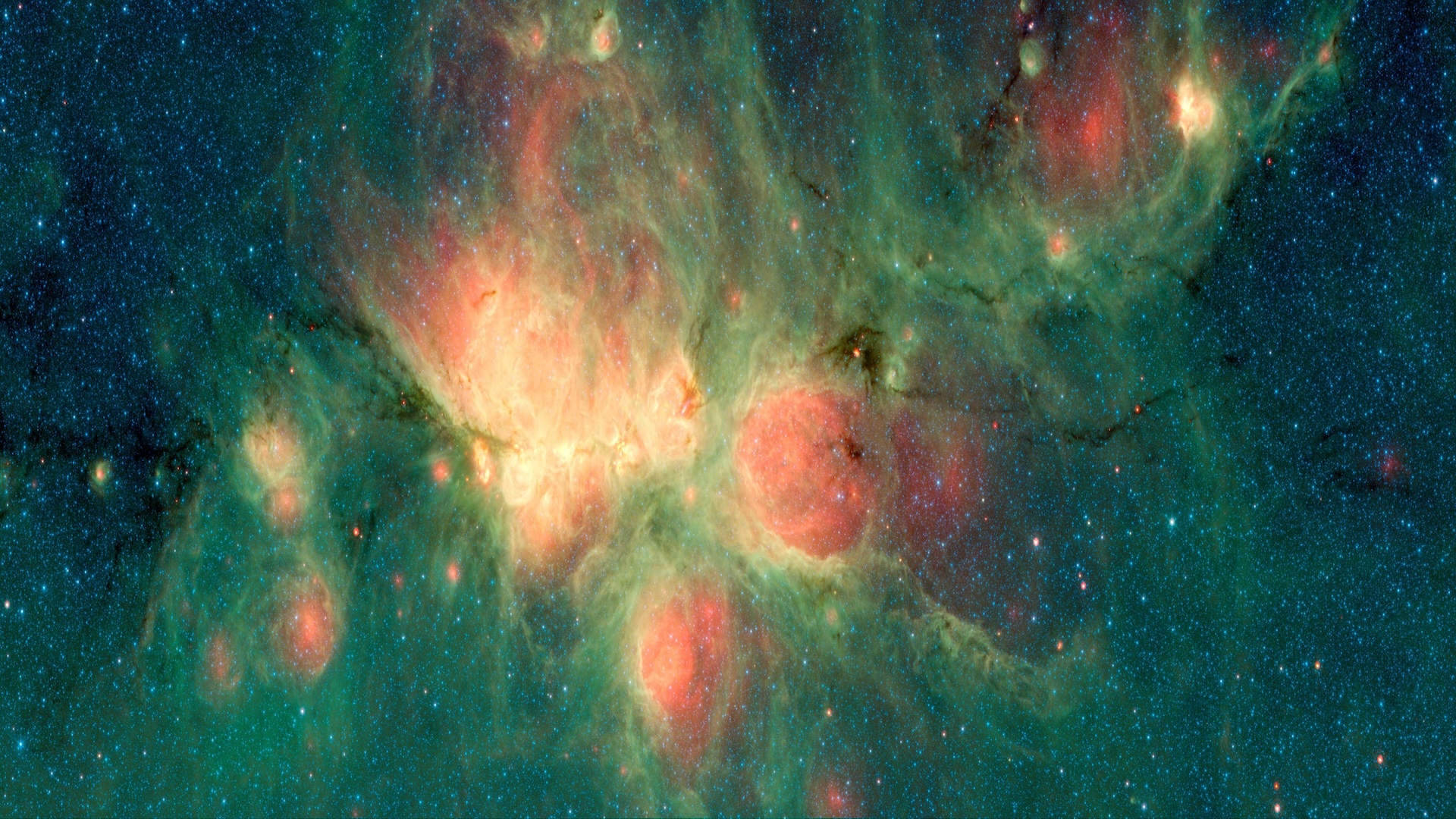
Researchers have detected an unusually large, previously undetected molecule in the Cat's Paw Nebula, a star-forming region about 5,500 light-years from Earth. At 13 atoms, the compound, called 2-methoxyethanol, is one of the largest molecules ever identified outside our solar system, the scientists reported April 12 in The Astrophysical Journal Letters.
We often think of space as a yawning chasm of nothingness between stars, but this apparent emptiness is alive with chemistry as atoms come together and break apart to create stars and planets over millions of years. Understanding how simple organic molecules such as methane, ethanol and formaldehyde form helps scientists build a picture of not only how stars and galaxies are born but also how life began.
However, detecting these basic building blocks of life is no mean feat. Every molecule possesses a unique energy "barcode" — a collection of specific wavelengths of light that the molecule can absorb. At a quantum level, each absorbed wavelength corresponds to a transition between one rotational energy level and another, and every molecule has a different-but-well-defined set of energy levels where these transitions may occur. This barcode of energy transitions is easily measured for samples in the lab, but astrochemists must then hunt out this same energy signature in space.
"When we observe interstellar sources with radio telescopes, we can collect the rotational signal from the gaseous molecules in these regions of space," first study author Zachary Fried, an astrochemist at MIT, told Live Science in an email "Because the molecules in space obey the same quantum mechanical laws as those on Earth, the rotational transitions observed in the telescope data should line up with those measured in the lab."
Related: Scientists made the coldest large molecule on record — and it has a super strange chemical bond
This approach is exactly how Fried and colleagues — part of a research team led by Brett McGuire, an assistant professor of chemistry at MIT — detected 2-methoxyethanol, a 13-atom molecule in which one of the hydrogen atoms of ethanol is replaced with a more complex methoxy (O–CH3) group. This level of complexity is particularly unusual outside the solar system, with only six "species" larger than 13 atoms ever detected.
"These molecules are typically much less abundant than smaller hydrocarbons that have simpler formation routes," Fried said. "Additionally, the spectral signals of these molecules are distributed over a greater number of transitions, thus making the individual spectral peaks weaker and more difficult to observe."
But it wasn't simply luck that led the team to this discovery; they also used artificial intelligence. The team had previously developed a machine-learning method to model the abundance of different molecular species in different regions of space. "Using these trained models, we can predict which undetected molecules may be highly abundant, and thus strong detection candidates," Fried said.
Methoxy-containing species had previously been detected in a part of the Cat's Paw Nebula, also called NGC 63341, and in IRAS 16293, a binary system in the Rho Ophiuchi cloud complex, located 457 light-years from Earth. As such, the team had a good idea of where to look for the new molecule.
Fried began by measuring the rotational spectrum of 2-methoxyethanol samples in the lab; he recorded a total of 2,172 possible energy signals for the molecule. Then, using the Atacama Large Millimeter/Submillimeter Array (ALMA), a set of 66 radio telescopes in Chile, the team collected readings from both the Cat's Paw Nebula and IRAS 16293 and analyzed the signals for the distinct energy signature of 2-methoxyethanol.
While no corresponding energy traces were detected in IRAS 16293, the team ultimately identified 25 matching signals from the Cat's Paw Nebula and confirmed the presence of 2-methoxyethanol in this star-forming region.
"This enabled us to investigate how the differing physical conditions of these sources may be affecting the chemistry that can occur," Fried said. "We hypothesized several causes of this chemical differentiation, including variations in the radiation field strength, along with different dust temperatures in these two sources [at different stages] of star formation."
The team hopes the findings may inform future studies to identify other as-yet-undetected molecules in space.
"The feasibility and efficiency of these pathways can be closely tied to the physical conditions of the interstellar source," Fried said. "By investigating which other species are involved in the formation and destruction of the detected molecules, we can determine other species that may be candidates for detection."






